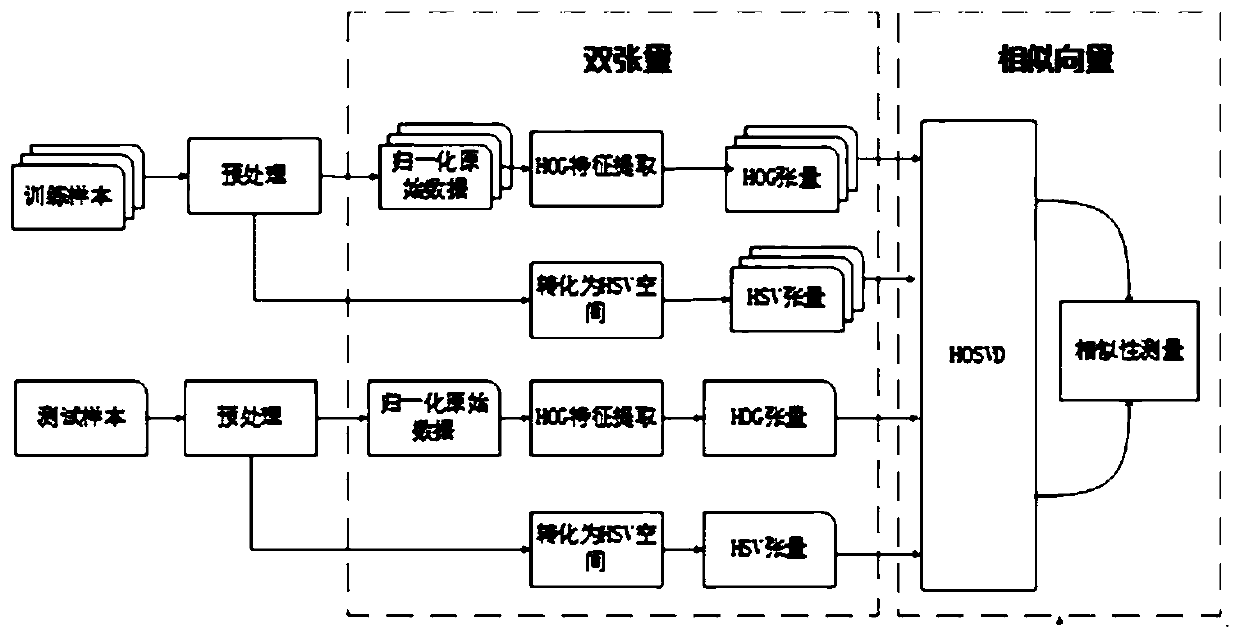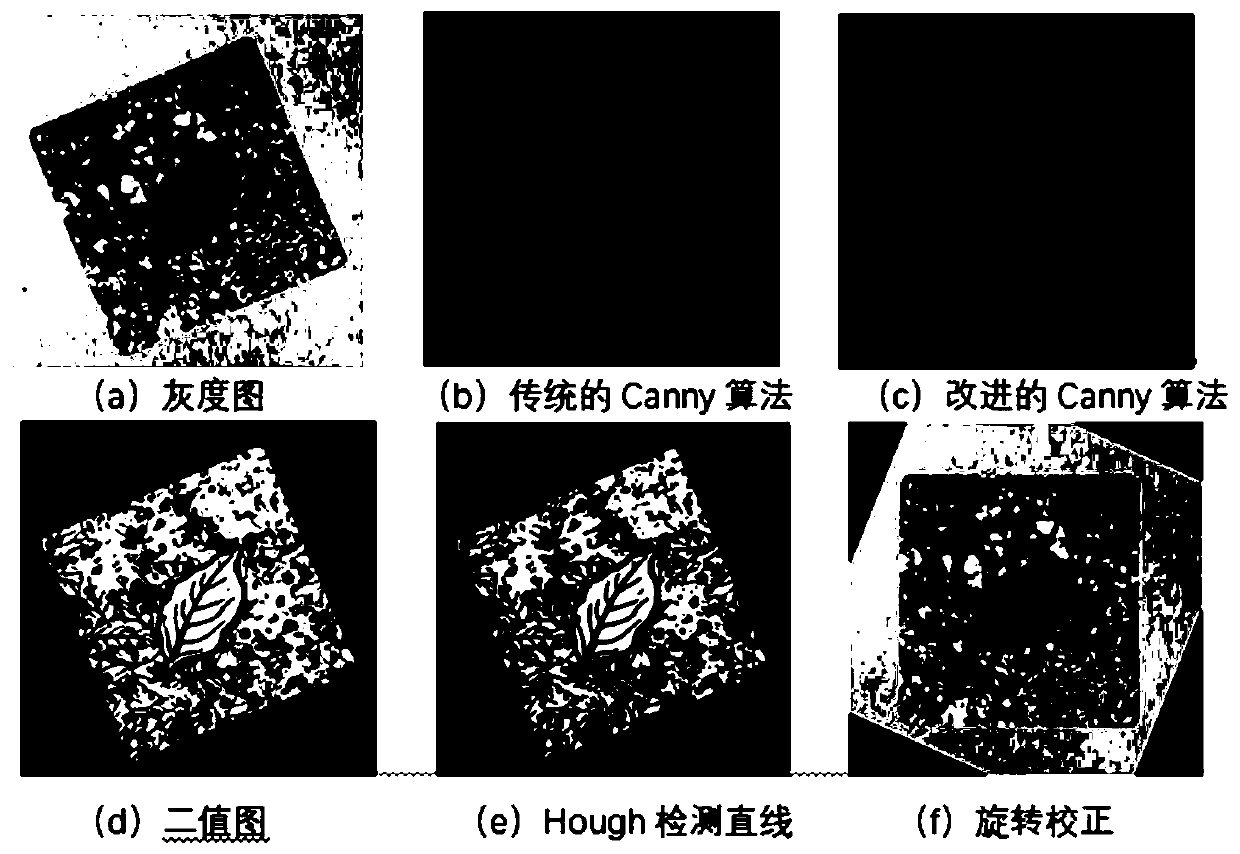Holographic diffraction label image recognition algorithm based on double tensors
An image recognition and holographic technology, which is applied in the field of holographic diffraction label image recognition algorithm based on double tensors, can solve the problems such as the inability to obtain stable recognition effect, and achieve the effect of improving recognition performance and good recognition performance.
- Summary
- Abstract
- Description
- Claims
- Application Information
AI Technical Summary
Problems solved by technology
Method used
Image
Examples
Embodiment 1
[0053] This embodiment provides a double tensor-based holographic diffraction label image recognition algorithm, such as figure 1 shown, including steps:
[0054]S11. Acquire the original image of the holographic diffraction label, wherein the original image includes the original image of the training sample and the original image of the test sample;
[0055] S12. Preprocessing the acquired original image of the test sample, generating an HSV tensor and extracting a HOG tensor;
[0056] Preprocessing the original images of the acquired training samples to generate HSV tensors and extract HOG tensors;
[0057] S13. Combining the obtained HSV tensor and HOG tensor of the test sample into a double tensor; combining the obtained HSV tensor and HOG tensor of the training sample into a double tensor; measuring the different decompositions of the training sample and the test sample by canonical correlation analysis similarity between matrices;
[0058] S14. Classify the similarity...
PUM
 Login to View More
Login to View More Abstract
Description
Claims
Application Information
 Login to View More
Login to View More - R&D Engineer
- R&D Manager
- IP Professional
- Industry Leading Data Capabilities
- Powerful AI technology
- Patent DNA Extraction
Browse by: Latest US Patents, China's latest patents, Technical Efficacy Thesaurus, Application Domain, Technology Topic, Popular Technical Reports.
© 2024 PatSnap. All rights reserved.Legal|Privacy policy|Modern Slavery Act Transparency Statement|Sitemap|About US| Contact US: help@patsnap.com










